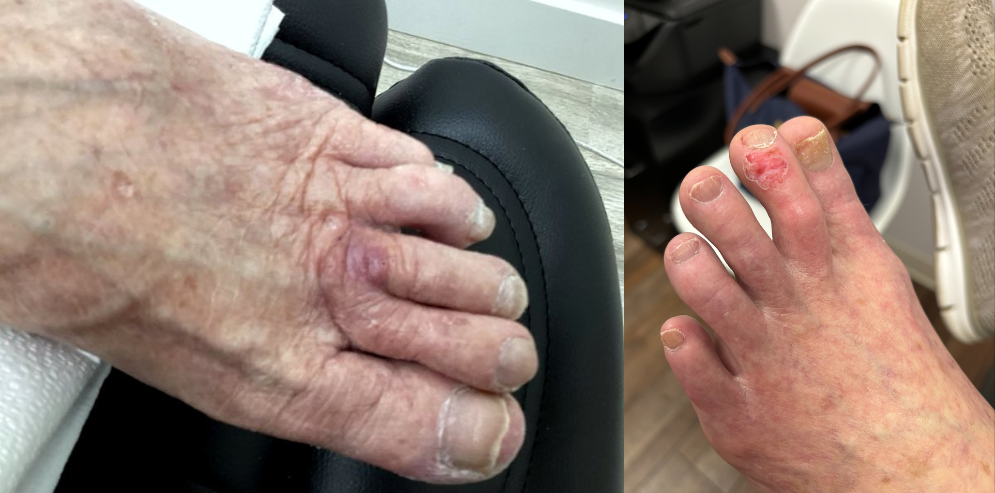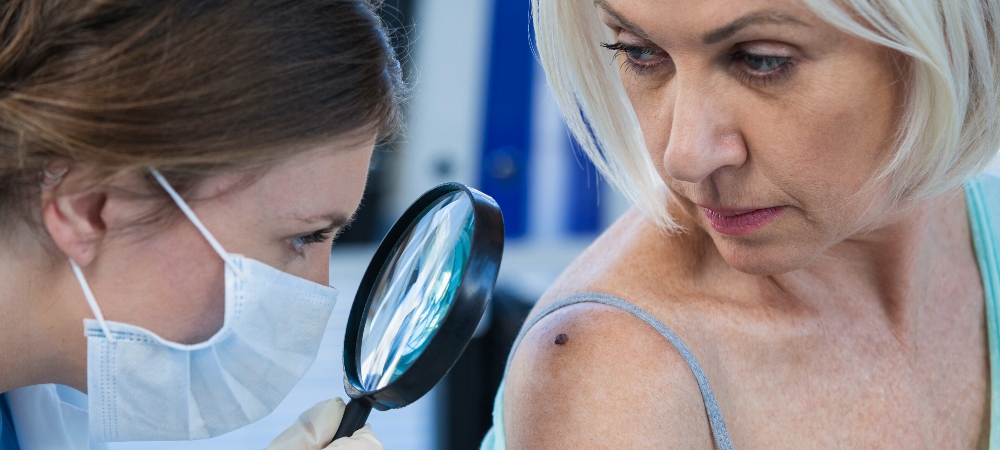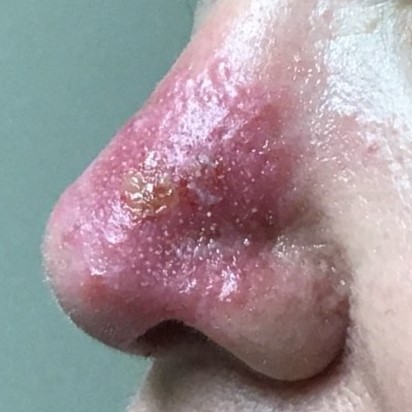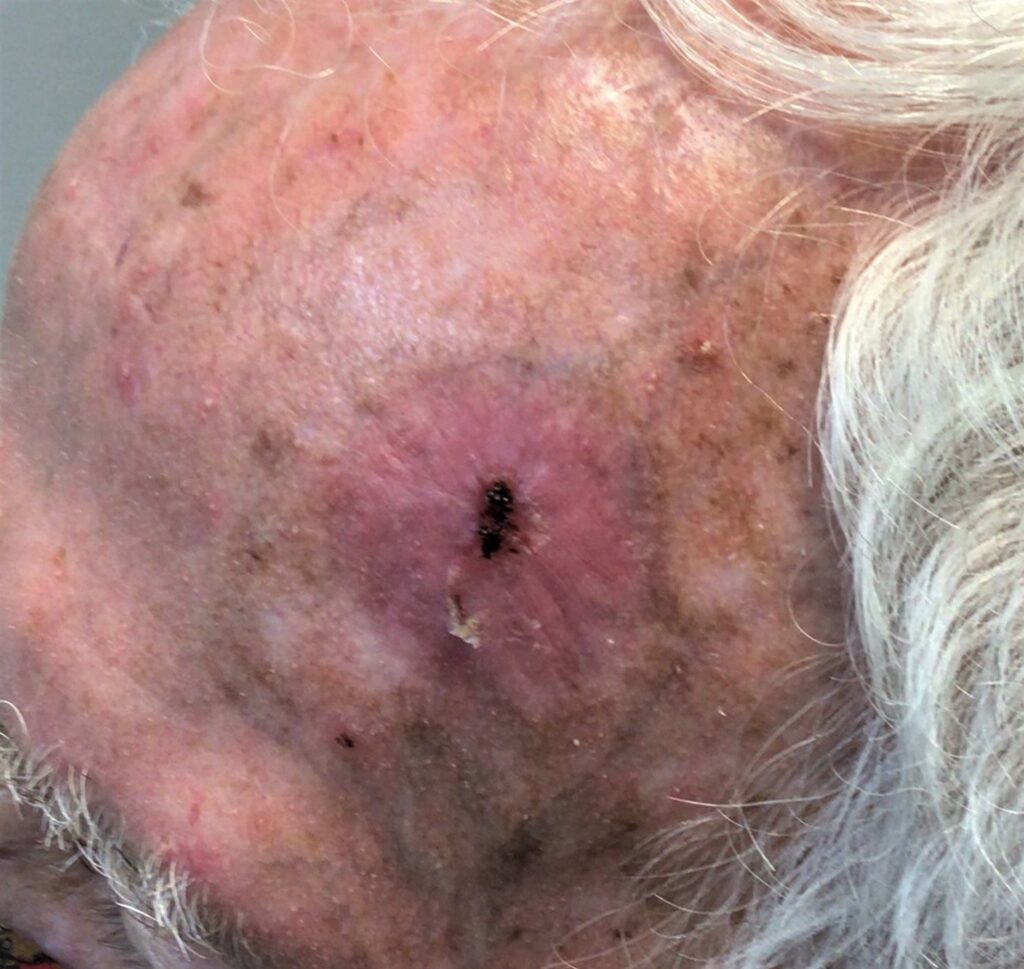Understanding the type of skin cancer you have been diagnosed with will help you to ask the right questions while exploring treatment options. Melanoma generally presents as a fast-growing mole with uneven borders or coloration—but this deadly variety of skin cancer is certainly not one of the most common forms of the disease. Basal cell skin cancer and squamous cell skin cancer are both much more common, and comparing basal cell vs. squamous cell skin cancer can help you determine what actions to take after receiving a diagnosis.
How can you tell the difference between basal cell skin cancer vs. squamous cell skin cancer? The Skin Cancer Information Specialists at GentleCure can help you become better informed so that you can speak to your doctor sooner, rather than later. Below we’re going to break down squamous cell versus basal cell skin cancer, including common warning signs to help you spot changes in your skin.
What is Basal Cell Skin Cancer?
The easiest way to learn the difference between squamous cell versus basal cell skin cancer is that basal cells are found deep within the epidermis. These cells grow and divide and move up to the very top layer of skin where skin cells are always shedding—but what is basal cell skin cancer? How does it differentiate itself when you compare basal cell skin cancer vs. squamous cell skin cancer? When these basal cells mutate and start to grow out of control, basal cell skin cancer can develop, but this is usually a very slow process. Basal cell skin cancer is unlikely to spread, but if it does spread, it usually moves directly into tissues and bones nearest to the affected skin cancer area.
Basal cell skin cancer may look like other skin conditions, such as eczema, but it most commonly takes one of the following forms:
- An open sore that doesn’t heal
- A red or irritated patch of skin that persists
- A shiny bump or growth that can be pink or light brown, depending on a person’s skin tone
- A waxy area that looks like a scar
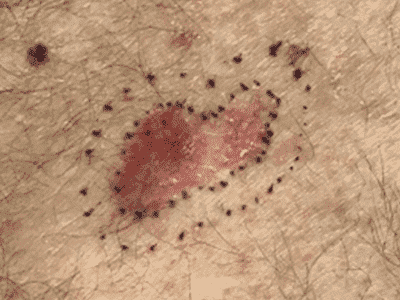
What is Squamous Cell Skin Cancer?
Squamous cells are found in the top part of the epidermis, as opposed to deep within the epidermis. Both basal and squamous cell skin cancers are relatively slow-growing, but the most important difference between squamous cell skin cancer versus basal cell skin cancer is that squamous cell skin cancer is more likely to spread to other organs. If it spreads, it can be life-threatening. That’s why it’s important for skin cancers to be identified and treated early on.
Like basal cell skin cancer, squamous cell skin cancer is most likely to appear in the sun-exposed areas of the body: the face, neck, and hands. Unlike basal cell skin cancer, squamous cell skin cancer usually takes one of the following forms:
- Scaly or rough patches of skin that bleed or crust over without healing
- Growths with raised edges and depressed centers
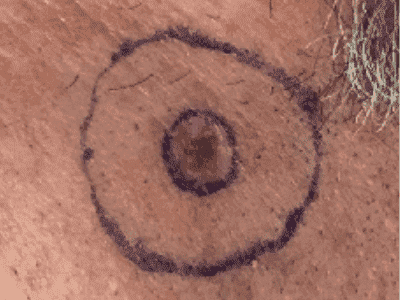
Basal Cell vs. Squamous Cell Skin Cancer: Treatment & Identification
People with fair skin and light hair are generally more susceptible to skin cancer, but skin cancer can affect anyone, regardless of skin tone. It’s important to schedule regular screenings with a dermatologist, and have any unexplained changes in your skin examined as quickly as possible.
We’ve covered some of the visual characteristics and conditions that separate these two common skin cancers—but the identification and treatment of skin cancer should never be left up to guesswork. Distinguishing basal cell vs. squamous cell skin cancer is ultimately a task best left up to a trained dermatologist, who can immediately recommend basal or squamous cell skin cancer treatment based on your diagnosis.
Although Mohs surgery is a traditional treatment for common skin cancers, Image-Guided SRT is a surgery-free alternative that is just as effective. Talk to a skin cancer information specialist to learn more about this type of treatment, and ask your doctor if Image-Guided SRT is right for you whether you’re treating basal cell or squamous cell skin cancer.
Discuss Your Treatment Options with GentleCure™
Contact skin cancer information specialists online or call us at 855-936-4411 if you have basal cell or squamous cell skin cancer to discuss your treatment options today, or you’re just looking for more information about basal cell skin cancer vs. squamous cell skin cancer. In the meantime, you can learn more about Image-Guided SRT online.

